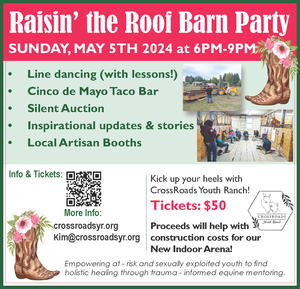Swinomish receive funding to build nation’s first modern clam
November 24, 2021
The Swinomish Indian Tribal Community has reason to be happy as a clam these days: The tribe has received two major grants to build the first modern-day clam garden in the United States.
The National Oceanic and Atmospheric Administration Saltonstall-Kennedy Competitive Grants Program and Northwest Climate Adaptation Science Center are providing monies to build the garden, allowing the tribe to retain access to traditional foods and reinforce maricultural practices going back more than three millennia.
“We are thankful to receive this funding that will enable us to continue to work with the land and the water as we restore our ancient practices,”
Swinomish Tribal Senate Chairman Steve Edwards said in a release issued last week by the University of Washington College of the Environment Sea Grant Program.
The awards could not have come at a better time.
The number of native littleneck clams on traditional Swinomish harvest sites has dwindled since the 1990s. Tribal officials and staff have been concerned those trends would continue, stressed by climate change and ocean acidification.
So, Swinomish undertook long-range planning to make what is old new again by reviving clam gardening, a practice at least 3,500 years old.
The goal, states Swinomish marine ecologist Courtney Greiner, is creating “sea gardens” that create greater ecological and socio-cultural resilience.
“Ecological studies have documented significantly higher densities of native littleneck and butter clams in historic clam gardens compared to unmodified beaches,” she said. “Clam gardens also increase the abundance of other species, from sea cucumbers to seaweeds.”
According to Greiner, who is taking the lead on the project, clam gardens are adaptable to sea level rise and have a high concentration of shell fragments than can improve habitat conditions as oceans acidify.
Clam gardening is designed to increase shellfish production and species diversity. Historically, clam gardens were created by construction of rock walls within intertidal zones, forming terraces and expanded optimal clam habitat.
Much of the preparation for building the Swinomish clam garden has been completed, said Greiner. The tribe has since applied for permits to build the garden at a site that meets criteria addressing community, ecological and social criteria, she said.
The Swinomish Fisheries Department and its Community Environmental Health Program partnered with Washington Sea Grant and received guidance from expert Indigenous sources and clam garden researchers to select a site where ecological and socio-cultural benefits can be optimized, Greiner said.
Pending permit approval, the grant funding will be used to construct a clam garden wall during community-led events. The funding will also be used to collect data at the site.
“This is an important opportunity to show that our long-standing indigenous knowledge can be useful in protecting our first foods against new impacts, such as climate change,” said Joe Williams, the Swinomish shellfish community liaison.
Melissa Poe, a Washington Sea Grant social scientist, confirmed that Swinomish has demonstrated a model that integrates social and ecological information with indigenous knowledge.
That melding of various cross-cultural resources has been something of a “necessity is the mother of invention” process.
“Our way of life changed drastically in a short amount of time,” explained Swinomish Tribal Senator Alana Quintasket, “and our people have experienced the impacts of that. Work like revitalizing clam gardening is one of the best things we could be doing during this time because our people need it more than ever.”











Reader Comments(0)